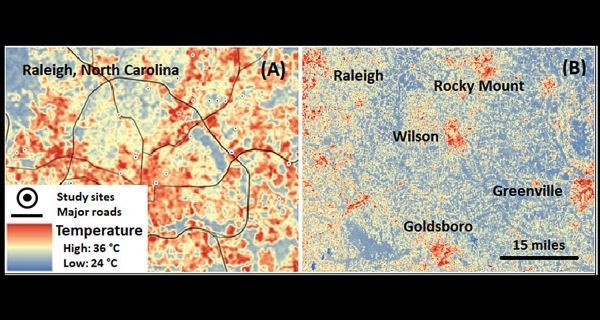Cities can serve as useful proxies to study and predict the effects of climate change, according to a North Carolina State University research review that tracks urbanization’s effects on plant and insect species.
Cities often display many of the predicted effects of climate change, including higher temperatures, higher carbon dioxide concentrations and higher drought rates. Some of those effects are due to impermeable building materials like concrete and glass, which help create “urban heat islands” and prevent water from soaking into soil.
Experiments in cities also have advantages over experiments performed in labs or in specially designed “growth chambers” that attempt to mimic higher temperature or drier soil conditions. Cities are larger than experimental chambers and organisms like trees have lived at higher temperatures their entire lives in cities, whereas other experimental methods can only increase temperature for short periods. Thus, urban areas can show how plants and animals respond to changes in climate over long stretches of time, which lab and growth chamber studies can’t quite match.
“Our review synthesized existing studies that used cities as proxies for climate change, particularly higher temperatures,” said Steve Frank, a professor in the Department of Entomology and Plant Pathology at NC State and a co-author of a paper describing the research.
Read more at North Carolina State University
Photo: Map shows urban heat islands in and around Raleigh and several other N.C. cities. Photo courtesy of Eleanor Lahr and Steve Frank.


